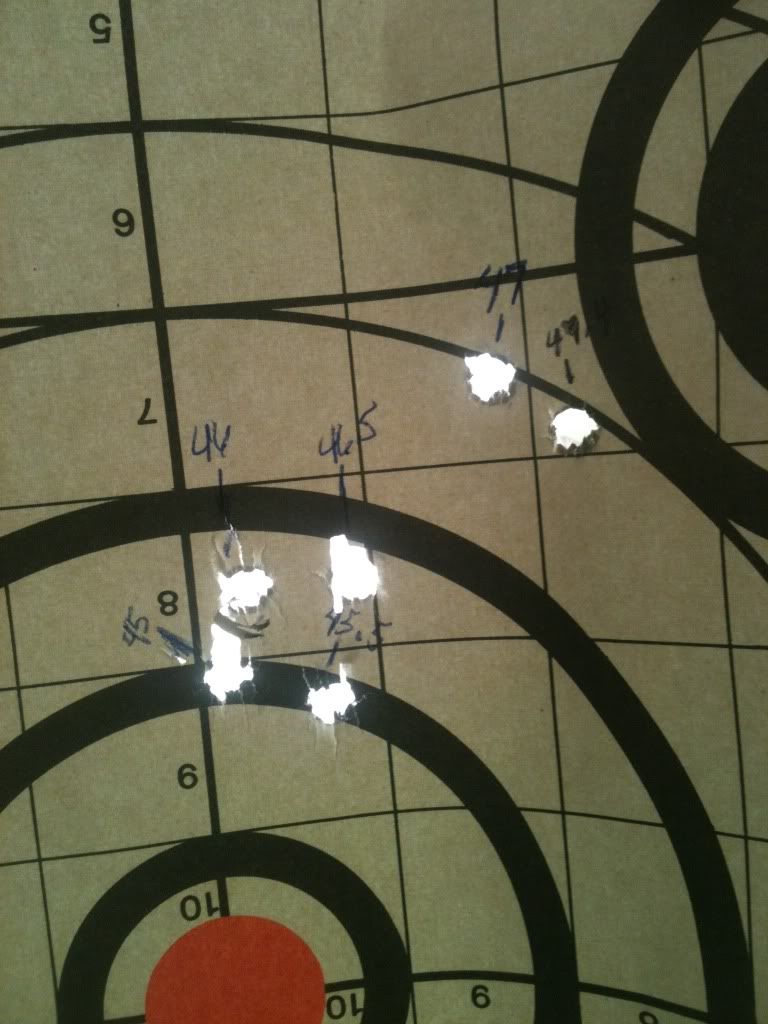There are several methods of conducting a ladder test. It looks like you are performing an "Audette" ladder test. I personally do not like the Audette ladder test as it relies on a single shot at each charge weight. That means that all of your results depend on you making perfect shots. Not only must you make a perfect shot, but no other variable can be allowed to change (barrel heating up, wind speed/direction changing, you getting fatigued, lighting changes, barrel fouling, etc.)
One method I have found that reduces the effect of human error is to use separate targets for each charge weight and shoot one shot from the first charge weight, then the second target with a round from the second charge weight, etc. This way, you not only have several shots representing each charge weight which you can average, but the above mentioned changes are spread out evenly among the different charge weights. Because of my equipment, I can no longer use this method for reasons I will explain.
Since a ladder test can be expensive, I want to gain as much data as possible while conducting the test. As a result, I not only look at the target results, I also chronograph my ladder tests. My latest chronograph is an Oehler 35P Proof Chronograph. While the 35P is a superior instrument, the software is a little behind the times. You cannot change shot groups like my previous cheapie chronograph. That means that I must shoot all shots for each group as a single group if I want it to calculate the statistics (high speed, low speed, spread, mean, and Standard Deviation).
What I have settled on as a ladder test, which works with my equipment, is to shoot 10 shots at each charge weight, using a different target for each charge weight. Since I am looking for consistency in exterior ballistics based on the charge weight, my understanding is that I should ignore windage. ( I have recently been informed by a benchrest shooter at my range that the wind can have an effect on my vertical spread if it is blowing directly at me or directly away, presumably due to a change in relative velocity, i.e. air speed instead of ground speed.) In any event, I look for the minimum vertical grouping.
Hope this helps.



